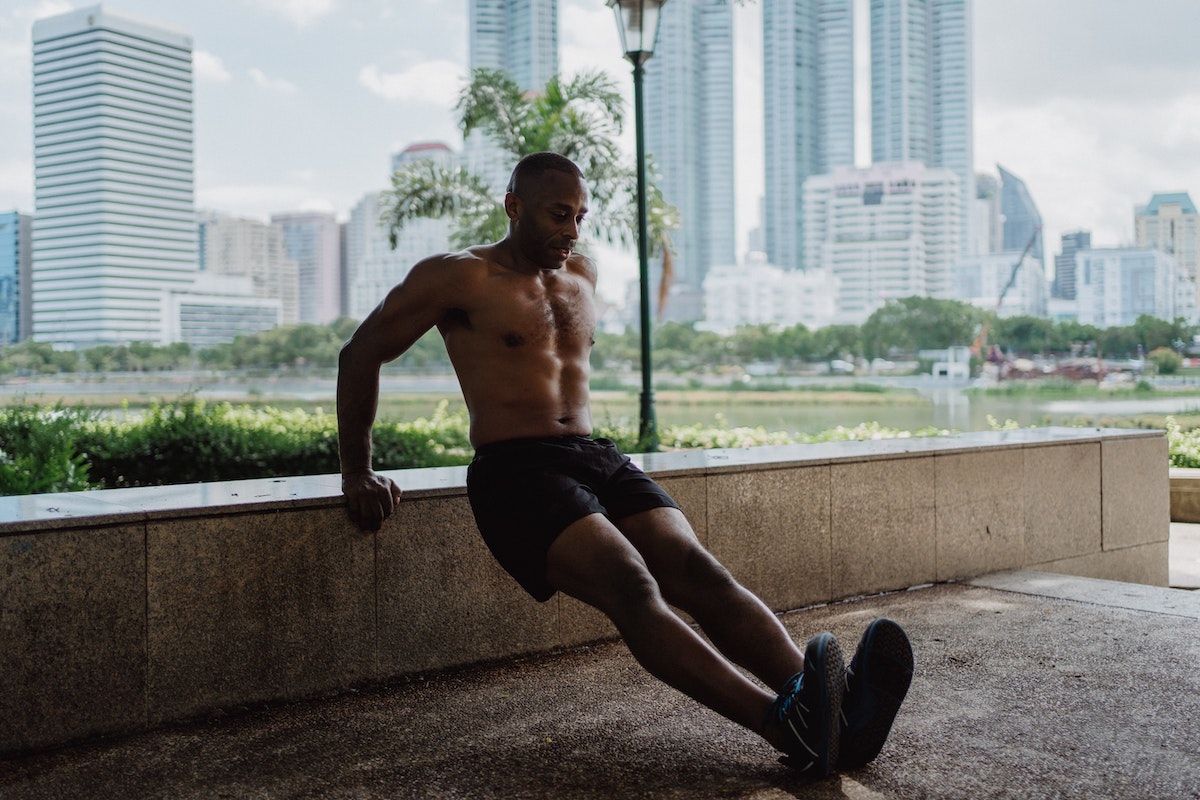It’s arm day. If you’re taking a guided workout on an app like Peloton or AppleFitness+, you’ll likely be instructed to work your triceps. If you’re into working out and bodybuilding, you may wonder about the best tricep exercises for mass. Even if you’re not, tricep workouts are important — and not simply to look ripped.
Working the arms builds strength, allowing us to lift items and move our upper body without pain. Though guided workouts tend to include tricep work, the muscle group can take a backseat to the more visible biceps. The fact that there seem to be endless variations on the bicep curl doesn’t help.
However, you won’t want to forget to work on the other major muscle in the arm, the triceps. Unsure where to get started? Here are the best tricep workouts.
Triceps 4-1-1: What to know about this important muscle group

Knowing why you’re performing tricep exercises may make you more inclined to finish that one last rep. Here’s a primer on where the muscle does and how the triceps play a critical role in your day-to-day life — even if you don’t notice.
Where are the triceps, and what do they do?
The triceps begin at the shoulder’s top and run down the back of your arm to the elbow. The triceps take up two-thirds of your arm, making them bigger than the biceps. They’re considered the primary upper arm muscle. Pretty big deal, right?
You bet. The triceps play significantly important roles, including:
- Elbow extension. When you contract the triceps, you straighten your elbow. For this reason, “tricep extensions” are popular moves in tricep workouts. You need this function to get dressed, push yourself up, and reach for something on a high shelf.
- Healthy spine indicator. The triceps have a distinct reflex. The forearm will involuntarily extend if the tendon is hit close to the bottom (near the elbow). When a person has this reflex, it’s a sign of a functioning spine.
- Shoulder mobility. The triceps start at the shoulder, aiding arm extension behind the body.
Why should you strengthen the triceps?
Doing tricep gym workouts — or exercises at home — has numerous benefits, including:
- Elbow function and mobility
- Shoulder function and mobility
- Ability to press and push up (needed for building additional strength in the gym and functionally)
Additionally, weight training more generally has numerous benefits, such as:
- Blood sugar management
- Reduced risk of cardiovascular disease
- Better balance and decreased fall risk
- Improved mobility
- More flexibility
- Reduced pain performing day-to-day tasks
- Improved mental health
These benefits are significant as you age, lose functional strength, and are at an increased risk for chronic disease and falls. You can’t stop aging altogether but can slow its effects with a strength training regimen that includes tricep exercises.
Best tricep workouts for mass and functional strength

Ready to get stronger? Try these tricep exercises.
Tricep kickbacks
A classic. These can be done with body weight but are typically done with dumbbells.
- Hold dumbbells in each hand with palms facing the thighs.
- Slightly bend the knees. Hinge forward at the waist, keeping the spine straight.
- Keep your upper arms tucked in and close to the body as you straighten your elbows.
- Pause for a moment.
- Bring the weights to the starting position.
- Repeat 10-15 times.
Bench dips
A popular element of tricep gym workouts, bench dips can also be done using a stair.
- Sit on the edge of a bench with feet flat on the floor.
- Extend your arms, keeping your hands behind you on the bench facing away from you.
- Push up and off the bench. Squeeze your shoulder blades.
- Lower down. Stop if you feel less tension in your mid-back or if your elbows go higher than shoulder height.
- Extend the elbows and engage the triceps by squeezing them as you return to the starting position.
- Repeat 10 times.
Hand release pushups
No equipment is needed for this one, making the move one of the most accessible tricep exercises.
- Assume a high plank position. Shoulders and wrists should be in one light.
- Lower your body until your chest is on the floor, keeping elbows at a 45-degree angle from your torso.
- Pick your hands up a couple of inches off the floor.
- Return palms to the floor.
- Push back up to a high plank.
- Repeat 10-20 times.
Tricep pushdown
This exercise requires a cable and is typically done at the gym.
- Face the cable machine.
- Take the horizontal cable bar or rope attachment using an overhand grip. Ensure the bar or rope is at chest level (adjust if needed).
- Stand with feet less than shoulder-width apart.
- Position your elbows so that they’re tucked by your sides.
- Push down as you bend your knees slightly. Using core strength, prevent yourself from bending over.
- Stop when your elbows are fully extended but not locked (or straight). They should remain close to the body.
- Return to start slowly and with control.
- Do 10 reps.
Diamond pushup
Another at-home and accessible workout, the diamond pushup doesn’t require equipment to get a good tricep workout.
- Get into a high plank position.
- Create a diamond with your thumbs and index finger, positioning the shape at the center of your chest.
- Do a pushup.
- Return to start.
- Repeat 10-20 times.
Overhead extension
You’ll need one dumbbell for this tricep exercise.
- Stand with one foot slightly behind the other in a narrow split stance. Keep weight evenly distributed throughout this exercise.
- Hold a dumbbell with both hands, with your palms facing the ceiling.
- Lift the dumbbell overhead, keeping the head and chest in one line. Shoulders should remain relaxed and not bunched up by the ears.
- Extend the arms and lower the weight with control, keeping the chest and hips in one line. Do not arch the back.
- Return to start.
- Repeat 10-15 times.
Bench press with dumbbells
Another mainstay in gym workouts, this bench press swaps the barbell with free weights.
- Grab a set of dumbbells.
- Lie back on the bench with a weight in each hand by the chest.
- Lift the arms until they form a right angle with the chest.
- Stop when the elbows are straight.
- Lower the arms with control.
- Repeat 20-30 times.
A personal trainer can help you customize a workout plan for you.
More tricep workout tips

As with all workouts, tricep workouts are most beneficial if you use proper form and technique. When you’re doing any of the above tricep workouts, make sure you have good posture and use controlled movements throughout your entire range of motion. Also, ensure you’re breathing correctly. This will help lower the chances of injury and ensure you get the most out of your workout.
Be conservative with weight when starting a tricep workout routine. Use lighter weights to help build strength, increasing the weight in small amounts to ensure proper form and avoid injury.
Finally, make sure you give yourself enough rest and recovery time. This allows your muscles to repair and rebuild themselves between workouts.




